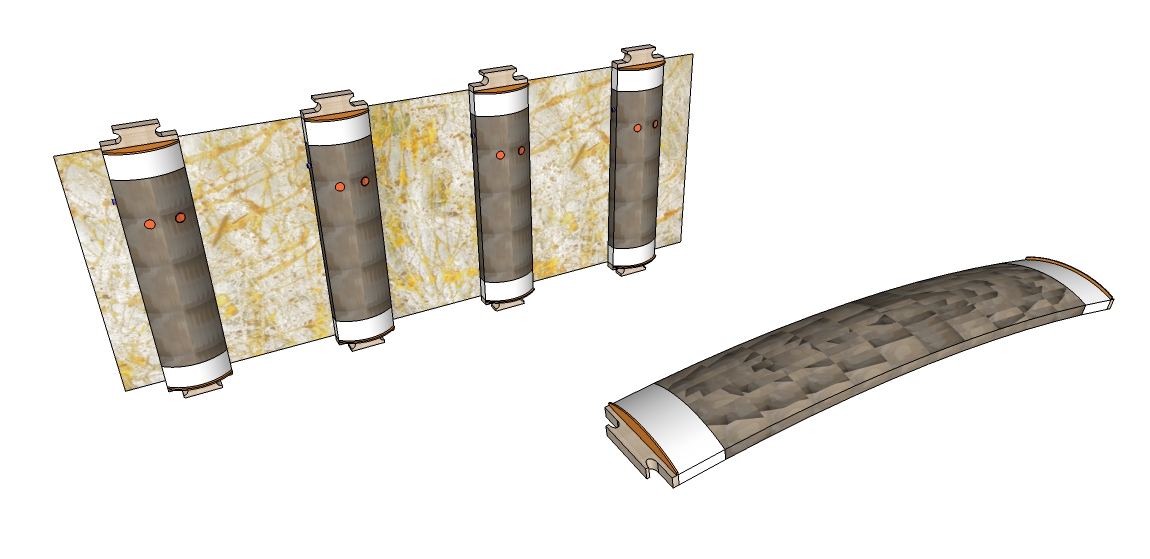
Pawlonia Workshop
pawlonia_workshop.pdf
{Playing: Deerhorn MLPS in the Workshop}
The deerhorn circuit has two outputs. We can use these to directly drive MLPS (Multi Layer Piezo Speaker), a new technology. It is lightweight and efficient, well-matched to Pawlonia wood, which is lightweight. For the hanging piece, which has four deerhorns, there will be a total of eight (8) MLPS. They sound best in the harmonica, or sho mouth organ, range. Woops, in this demo, I have just taped one on, and it is buzzing pleasantly against the Pawlonia, but we can epoxy them on as well, to get a crystal clear tone. The tones hear are simple, not modulated, but there are many possibilities for wild modulations, mild undulations or wmild mondulations, by patching the four deerhorns together. Only one is seen here, so you'll have to imagine the complete piece.
The output of that piece could be another, normal piezo, also glued to the wood, so you can hear the sympathetic strings as well. This one was not strung yet. Remember, this is the electro-acoustic solution. There is also the amplitude modulation solution, suitable for a single, large koto. This involves 2 deerhorns and a special, simple trinary multiplier paper circuit. It yields a stereo output, for external monitor, that is driven by the deerhorns and 2 preamps. That is the solution if you want maximum power including bass frequencies, using a PA.
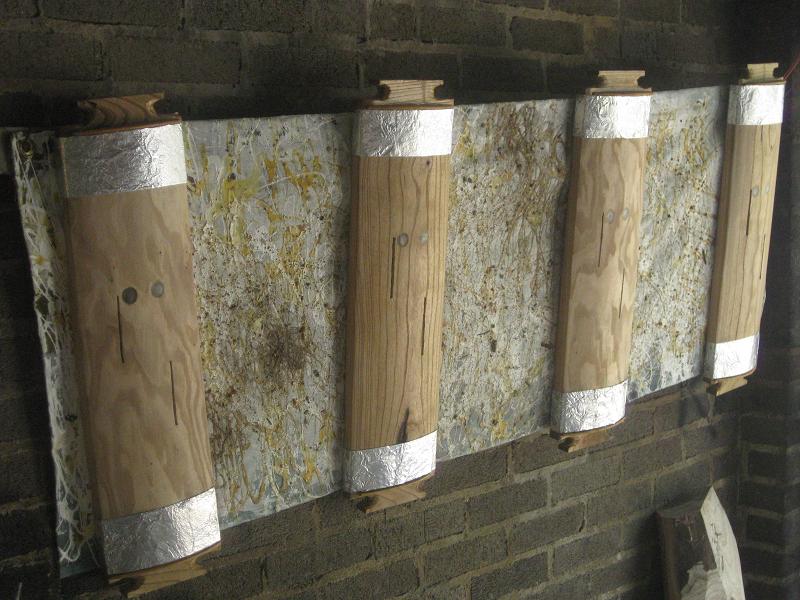

Deerhorn Schematic (from upcoming roolz synthesizer)
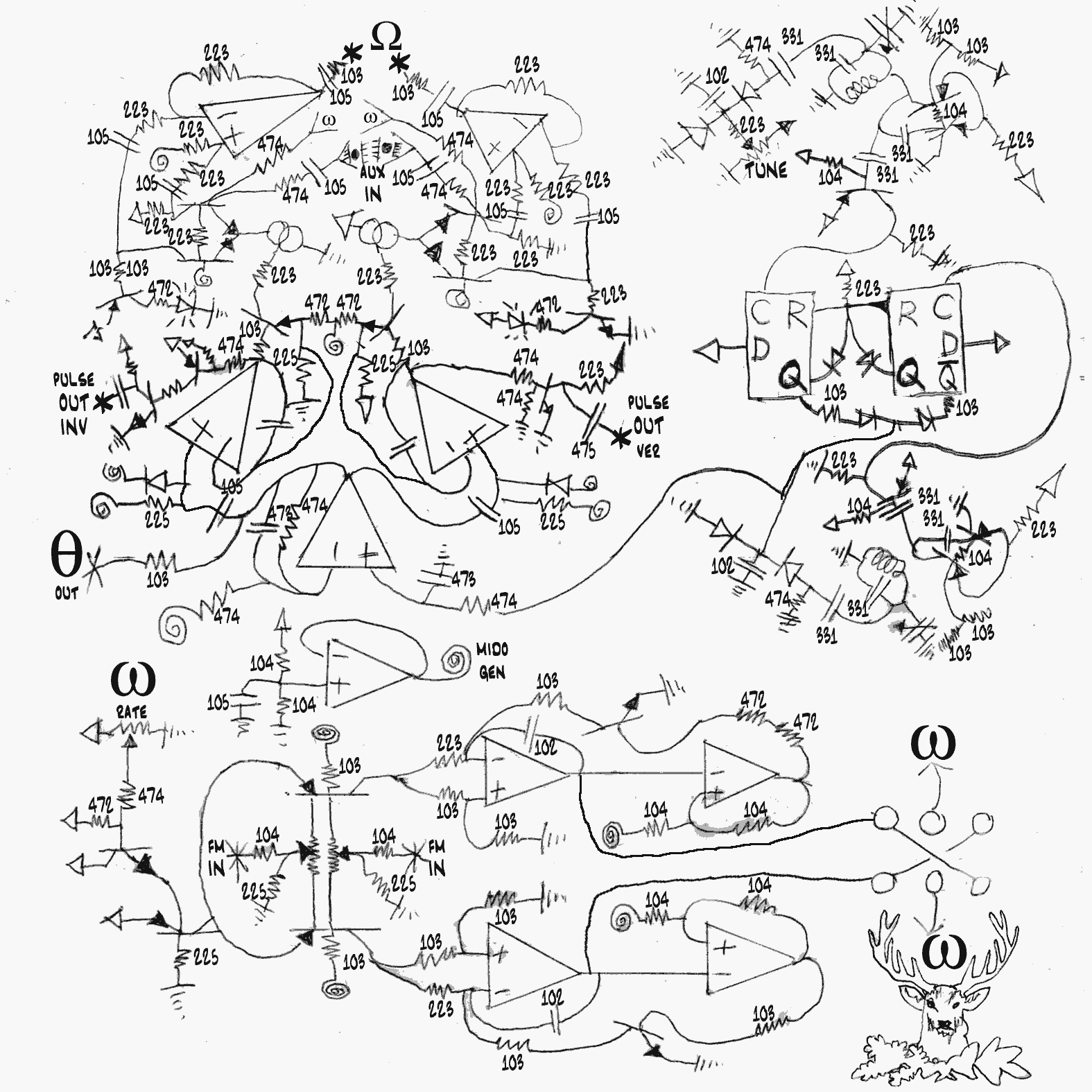
 here is the circuit board for the
workshop, it is called "deerhorn":
here is the circuit board for the
workshop, it is called "deerhorn": here is
test fitting the circuit board into a hand carved "micro-zither":
here is
test fitting the circuit board into a hand carved "micro-zither":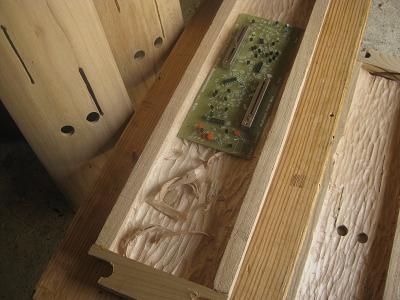 there are many blanks for large zithers, too,
in the Pawlonia (kiri) house:
there are many blanks for large zithers, too,
in the Pawlonia (kiri) house: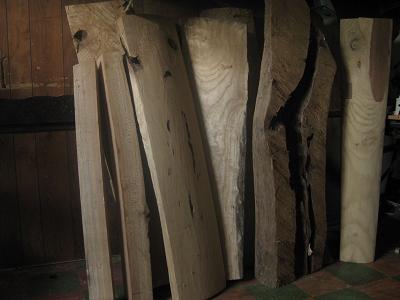 in the
basement, a carving station:
in the
basement, a carving station: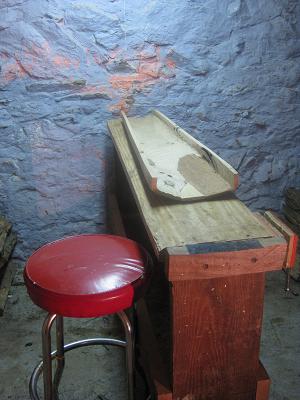 also in the
basement are many medium size blanks:
also in the
basement are many medium size blanks: 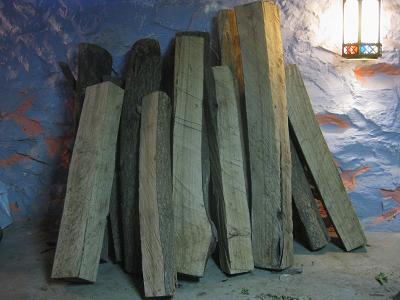 Ciat-Lonbarde makes wooden boxes with circuits inside:
Ciat-Lonbarde makes wooden boxes with circuits inside:  specializing in creative, custom needs:
specializing in creative, custom needs: 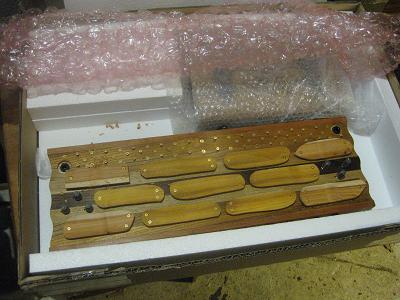
and finally, this is the paradigm piece for the workshop:
four Deerhorn modules embedded each in a "micro-zither",
hung on the wall using expressive, "Pollack" canvas.
note: this image is from spring, 2012;
the micro-zithers have yet to be strung, circuited, bridged and knobbed
although you can see they are saddled as well as the taughtening mechanism is in place:

previous curricula: TIMARATERIALS
previous workshops: BENJOLIN
previous curricula: deerhorn pdf
Radio Zither Page |
Deerhorn Page |
||
|
|
the dates August 10-17 are tentative until the workshop's 5-7 seats have all been filled, at which point it is confirmed. If the workshop is not confirmed, your fees will be returned to you by July. On completion of the workshop, you will recieve a certificate. If you do not complete your piece, this certificate is rescinded.
at this moment, please email for more information about the workshop.
having your own soldering iron is optional, but you do need to use one (in your electronic music dep't for example) ahead of the workshop, to prepare your circuits.
please purchase your own pair of leather gloves to protect your hands.
you probably have noticed that we have not talked about amplification yet. that is because there are many options to accomplish what you want, in acoustic energy from the instrument as well as what kind of sound you want in the PA. perhaps you want a hot output there? or a soft output that sounds "real". for the first, we will construct a small paper circuit that preamps a transducer and then multiplies it with some tricky trinary logic by the electronic tones of the deerhorn. an alternative way to do this is by the "electro-acoustic process".
